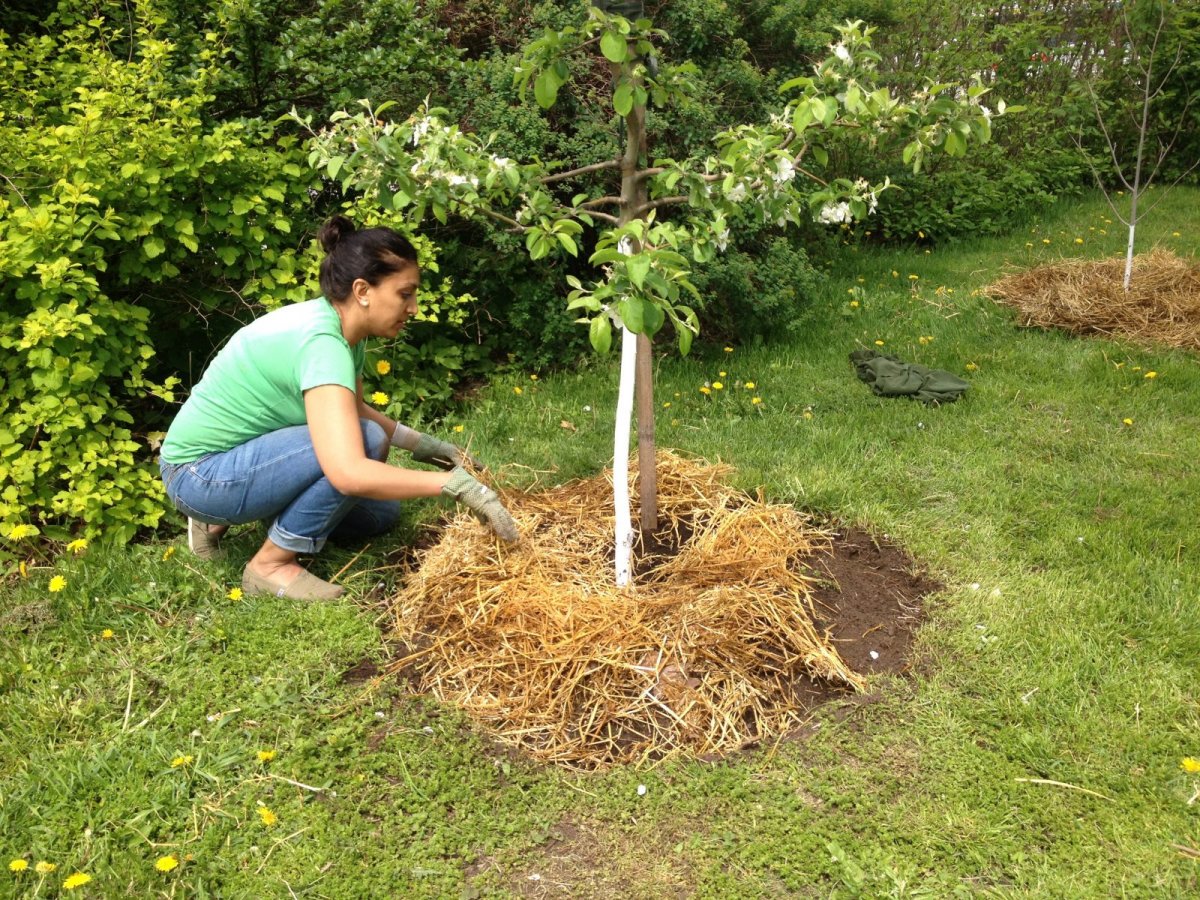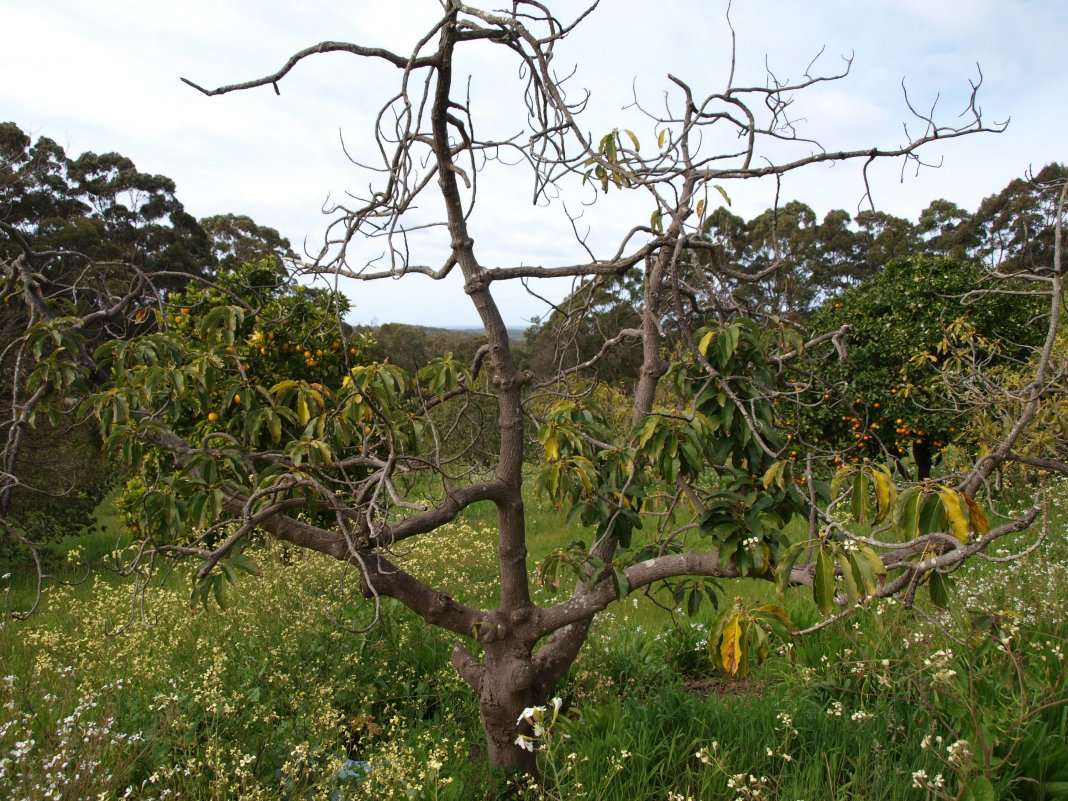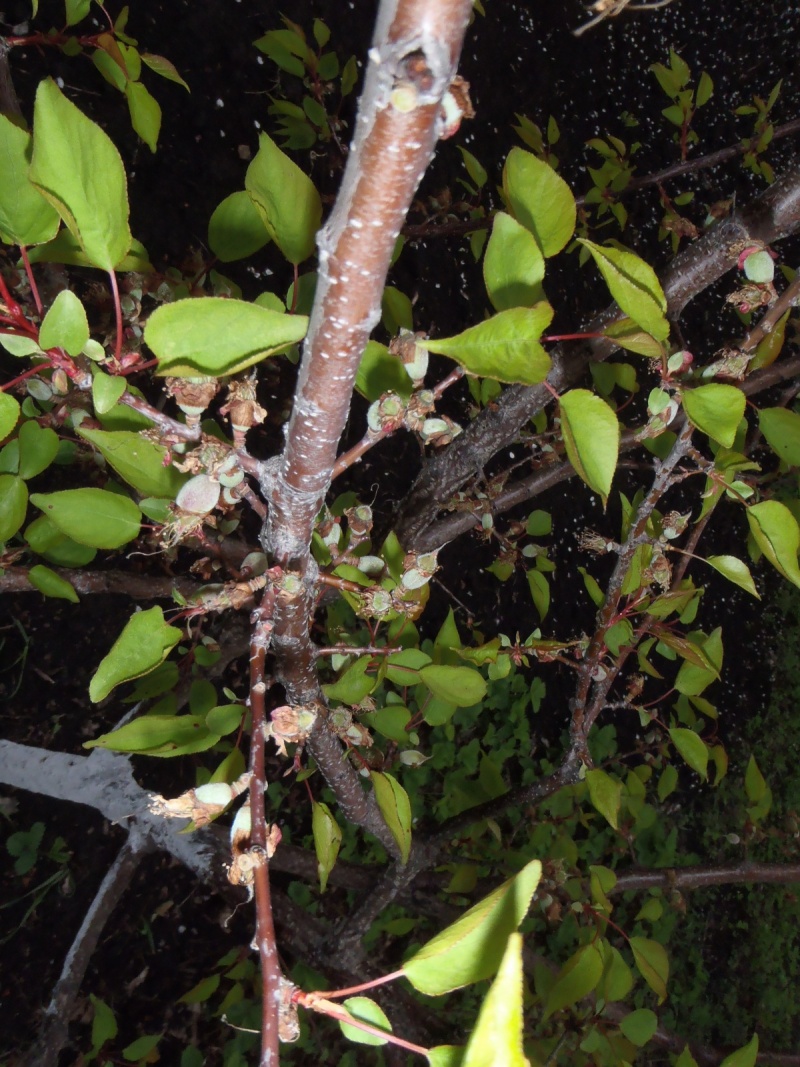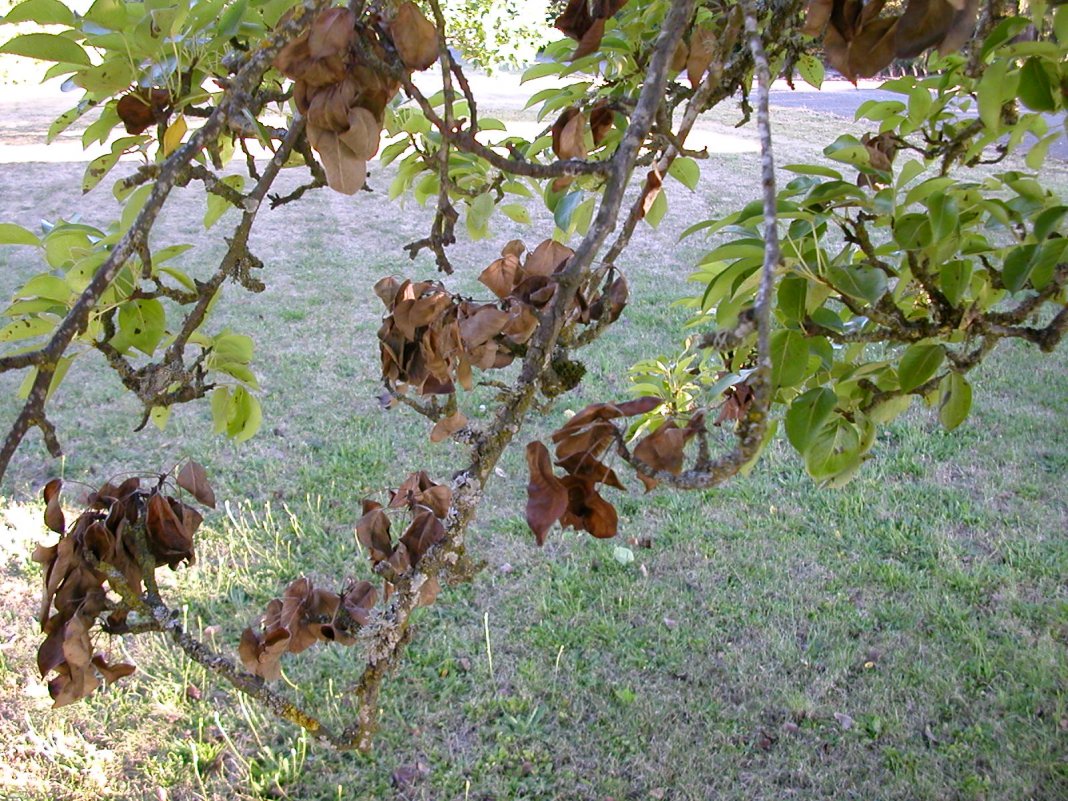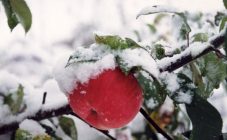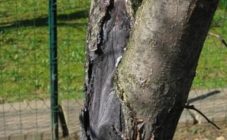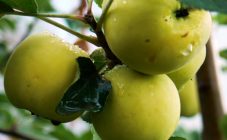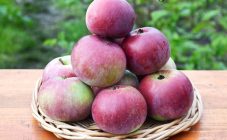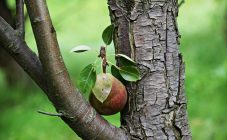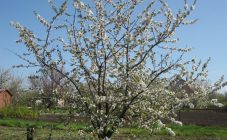Content:
Rules for caring for an apple tree in spring
A gardener has a lot to do in the spring so that the apple trees will please with an excellent harvest in autumn. Work in the garden begins as soon as the air temperature during the day is not lower than +10 ° C (early-mid-April), and the probability of night frosts is minimal. Spring care for an apple tree consists of the following activities:
- The tree is freed from winter insulation, shelters;
- The territory of near-trunk circles is removed from last year's fallen fruits, leaves, branches. Such cleaning is necessary not only in autumn but also in spring.
- Examine the trunk and branches for damage. If the wounds are superficial (for example, cracking and peeling of the bark), then it is enough to remove the damaged bark and treat it with garden pitch.
- In the presence of serious damage to the trunk or branch, for example, by rodents, the bare wood is carefully cleaned and covered with garden pitch, and then twisted with burlap.
- Before the buds appear, the apple tree is pruned. Remove damaged and weak branches, growths. Formative pruning avoids bifurcation of the main trunk.
- After pruning, they begin to whitewash the trunk, skeletal branches. For this, solutions are used from lime, chalk, copper sulfate. Sometimes acrylic paint is applied to the trunk for a protective layer, which is more resistant to rain and frost. These are the main jobs that the gardener does every spring.
However, very often in the spring, gardeners, when examining an apple tree, discover drying out, both of its individual parts and of the whole tree as a whole. This situation requires immediate measures, but before them it is necessary to understand why the apple tree has dried up after winter, because the choice of measures depends on the reason that will reduce the consequences of this phenomenon not only in the current year, but also in subsequent seasons.
Determining the exact cause is not easy.
To begin with, consider a few general points that can lead to drying out of the apple tree during the entire growing season:
- Features of the soil in the garden;
- Shallow groundwater horizon;
- Lack or complete absence of elements and trace elements;
- Influence of climatic and atmospheric conditions;
- Manifestation of fungal, viral, bacterial diseases;
- Presence of dangerous pests.
After wintering, the apple tree can dry out either partially or completely due to:
- Severe frosts, lack of snow cover;
- Insufficient cover of the trunk circle;
- Root cancer bacterial disease.
The damage to the apple tree caused by the above reasons has a number of negative consequences:
- Freezing of the trunk and root system leads to the drying up of a healthy apple tree after winter.
- Cancer growths on the root and its lateral processes rot in the fall, completely destroying the root.The tree dies in the spring.
If the apple tree dries up in spring or June
If the apple tree dries up in spring, what to do to save it, the gardener can decide only after determining the cause of the drying out of the branches, tops, and leaves of the trunk. Let us examine in detail each of these cases.
Why do apple tree branches dry
Causes
The main reasons for the drying of branches in an apple tree are:
- waterlogging of the near-trunk circle with groundwater;
- excessive accumulation of water from melting snow;
- lack of nutrition.
Effects
- Excess moisture impedes the flow of air to the root hairs, which provide the entire tree with nutrients;
- From lack of nutrition, the branches of the apple tree begin to dry out gradually.
The top has dried up
Causes
Drying of the top of the apple tree occurs due to reasons such as:
- High groundwater table;
- Flooding of the near-trunk circle and root system with melt water in spring during a sharp warming;
- Lack of nutrition (nitrogen, phosphorus or potassium starvation).
Effects
- Waterlogging of the soil leads to decay and partial death of the root system, which leads to dry tops.
- Due to the insufficient amount of some nutrients (nitrogen, potassium, magnesium, calcium), the plant shows signs of starvation. The tops begin to dry out. For example, if the top of a young apple tree is almost half dry, then it does not have enough nutrition for growth.
Leaves are drying
Causes
On a plant with a damaged root, not only the branch, the top, but also the leaf becomes dry and lifeless.
But the main reasons for drying foliage are:
- Scab - the leaves are covered with an oily bloom, brown, gradually growing spots appear;
- Powdery mildew - the leaves first turn a dirty gray color, then dark brown;
- Rust - bright brown spots with black dots appear on the leaf plate;
- Black cancer - the leaves become covered with black spots, black sores and rot appear on the branches and bark of the trunk. This insidious disease can destroy all parts of the tree in a short time. Often this infection becomes the reason why apple trees die on the site with good care.
- Lack of nutrients: potassium, zinc, magnesium, calcium.
Effects
Leaves begin to wither and dry prematurely. The apple tree does not bear fruit.
The flowers are drying
Causes
- Lack or absence of minerals;
- Fungal diseases (powdery mildew, black cancer or black fungus);
- The presence of pests (aphids, ants, ticks).
Effects
During the flowering period, the plant needs enhanced nutrition. But if any separate nutrient (nitrogen, phosphorus, potassium) is not contained in the soil, then the annoying fall of flowers and drying of the buds begin. Flower buds strongly affected by diseases or pests may not bloom at all. All this will lead to the fact that the future harvest will be in jeopardy.
- If a young twig is covered with aphids (it is enough to look closely), then the flowers, not having time to bloom, dry up.
- Black cancer is an insidious disease. He destroys all parts of the tree. Petals turn brown, pistil and stamens turn black.
- Dead central trunk
Causes
- Proximity to groundwater;
- Accumulation of surface waters;
- Complete freezing of roots in winter;
- Bacterial cancer (growths, seals on the roots);
- Insufficient insulation of the trunk for the winter.
Effects
Waterlogging of the soil near the trunk circle has a detrimental effect on the roots. The root system infected with bacterial cancer also does not survive. Without a root, the main trunk dies, the tree is almost impossible to save.
If the trunk of the apple tree is not properly insulated for the winter, then cracks may appear in severe frosts. The stem capillaries and bark fibers die.
All kidneys have dried up
Causes
- The presence of a disease (powdery mildew);
- Impact of winter and spring frosts;
Effects
If the buds damaged by powdery mildew are not treated in time, they may die, and the tree will not bear fruit.
Both in winter and in spring, the kidneys can suffer from frost. How to reanimate an apple tree if all the buds have dried up will be described below.
Half of the apple tree is withered
Causes
- Proximity to groundwater;
- The main trunk was not insulated for the winter;
- The presence of rodents (mice, moles).
Effects
Due to the partial death of the roots as a result of freezing, soaking, damage by rodents, part of the apple tree, sometimes half, dries up.
The apple tree has dried up, and a new sprout has emerged from the root
When a tree cannot be saved, it dries up. But even in this case, the apple tree can be reanimated if a small root still survives in the ground, from where a small shoot can crawl out. But a real fruit-bearing tree from this game will not work - the fruits will be small, tasteless, and the branches are strewn with thorns. In order to get a cultivated tree for the wild, you need to plant part of the cultivar - a shield with a bud, a stalk.
Thus, each of the above reasons can be the answer, for example, because of what and why apple trees die this year on the site.
The apple tree has dried up after winter what to do
With diseases
At the first signs of damage to the plant by a fungus, bacteria begin treatment:
- Powdery mildew is sprayed with a solution of fungicides (Hom, Skor, Topaz);
- For the treatment of scab, rust, drugs are used: Fitosporin-M, Horus, Gamair, etc. Spraying with Bordeaux liquid (1%) is carried out at intervals of 2-3 weeks. For rust, 3 treatments are enough; to treat scab, it will take up to 7 sprays.
Gardeners often resort to simple means. For example, solutions for spraying trees can be made from copper sulfate (5 g per 10 l of water), baking soda (50 g per 10 l).
It is difficult to overcome a disease such as black cancer, it is easier to prevent it, for which a number of preventive works are performed:
- Sick branches, leaves are removed, since fungal spores like to winter in fallen leaves and fruits.
- Seedlings are carefully selected, examining the roots for the presence of diseased growths. Then in the spring there will be no problem why a young apple tree dries up what to do with it.
To get rid of harmful insects, the plant is sprayed with a solution of such drugs as Decis, Karate, Aktelik, Iskra, Inta-Vir, Fufanon and their analogues. From common rodents and moles, special potent poisons are used, for example, the drug Ratobor.
Are malnourished (signs of starvation)
- In the spring, they form the crown correctly, cut off excess branches so that they do not take food;
- Flowers, buds, buds are sprayed with preparations: Skor, Epin-extra, Ovary. Processing is carried out until the flowers appear, then during the flowering period (May) and when the flowering is completely completed (June-July).
- In late April and early May, apple trees are fed with nitrogen-containing fertilizers (ammonium nitrate, ammonium sulfate, etc.). In June, add superphosphate, potassium sulfate, potassium nitrate. From organics, slurry, infusion of chicken droppings are used.
With waterlogged soil, proximity to groundwater
- In the spring, the near-trunk circle is allowed to dry well, for which shallow drainage ditches are equipped.
- Places of accumulation of water are poured with fertile soil.
With unfavorable weather conditions
- The central trunk is reliably covered for the winter, otherwise the tree may simply not overwinter, completely freezing out in severe frosts.
- The trunk circle is covered with snow.
- For regions with a harsh climate, seedlings of zoned varieties with high frost resistance are purchased (for example, any winter variety - Medunitsa, Grushovka Moskovskaya, Melba, etc.).
Prevention
In order not to face the problem of why the apple tree dries and what to do in this case, preventive measures are needed:
- If the aquifer is shallow in the area where the apple tree grows, then drainage and drainage ditches are needed. You cannot do without adding a mixture of peat, fertile soil, rotted manure, sawdust.
- By winter, the trunks of apple trees are well insulated, windproof shelters are equipped.
- Mulching is performed in autumn. To do this, dry and loose compost, rotted manure, sawdust of non-coniferous species (birch, alder) are poured into the trunk circle. If the winter is harsh and frosty, then they are additionally covered with snow.
- Top dressing of plants is carried out in a timely manner, in compliance with the norms and the amount of dressings. When August comes, an adult tree gives a lot of energy to pouring fruits, so it is fed with phosphorus-potassium fertilizers.
- Spring pruning of branches (sanitary, formative) is performed competently. The removed and damaged branches are removed from the site, the sections are disinfected and treated with garden varnish, oil paint.
- Trees are checked for pests and diseases. Modern drugs allow you to cope with any ailment.
In order for the apple orchard to please with an excellent harvest, and the apple to be appetizing and tasty, the trees need care and attention. Then the branches will turn green, and the buds will bloom and bloom.
